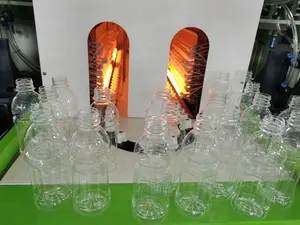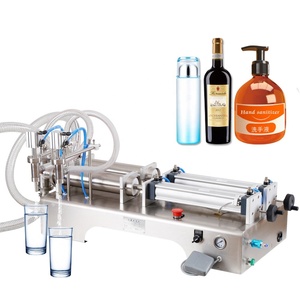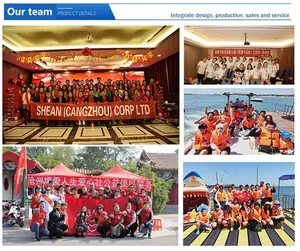(15846 products available)



















































































































































































































A juice bottle making machine is used to manufacture plastic bottles, mainly for packaging juice. Various types of juice bottle-making machines are available.
Extrusion Blow Molding Machine
The first type of juice bottle-making machine is the extrusion blow molding machine. The process begins with thermoplastic resin pellets that are fed into the hopper and then heated within the barrel of the screw to form a molten, homogenous material. Once enough material is built up in the barrel, the screw is pushed back to allow the material to be forced out in a continuous strand. The strand is then cooled until it hardens. A parison is then formed and placed in the mold cavity. Air is injected to expand the parison so it takes the shape of the mold. Once it is cooled, the mold is opened, and the newly formed juice bottle is ejected.
Injection Blow Molding Machine
The second type of juice bottle-making machine is the injection blow molding machine. In this process, the first step is creating the container preform through an injection molding process. Hot, molten plastic is injected into a mold that is cooled to form the preform. The preform looks like a small, thin-walled tube with a wide mouth, which is heated and then placed into a blow mold cavity. The preform is expanded to the shape of the blow mold using compressed air. Once cooled, the blow mold is opened, and the newly formed juice bottle is ejected.
Stretch Blow Molding Machine
The third type of juice bottle-making machine is the stretch blow molding machine. The process begins with heating the preform and placing it in a mold. The preform is then stretched vertically to fit the container. Finally, high-pressure air is used to expand the preform into the container.
Thermoforming Machine
A thermoforming juice bottle-making machine makes containers by heating plastic sheets to a forming temperature and then stretching them over a mold. Once the sheet is formed, it is trimmed to make the container.
Food and beverage industry:
Restaurants, cafes, and hotels often look for ways to present their food and drinks. A glass juice-bottle-making machine can create attractive packaging for freshly squeezed juice or other beverages, helping businesses stand out and attract customers.
Startup companies and entrepreneurs:
Individuals starting their own juice bottle-making businesses require affordable and versatile machines. Compact juice bottle-making machines allow startups to produce small batches of unique flavors and target niche markets, enabling them to enter the competitive juice industry.
Education and training:
Schools, colleges, and culinary institutes may use juice bottle-making machines for educational purposes. Students studying food production, entrepreneurship, or marketing could benefit from hands-on experience in creating and packaging their beverages, enhancing their practical skills and knowledge.
Glass bottle juice-making machines play a significant role in the food and beverage industry, empowering entrepreneurs and small businesses to produce high-quality, fresh juices in an eco-friendly and cost-effective way.
Capacity
When determining the machine's ability, it is essential first to define the needs. It is critical to understand whether the intended use is industrial or small-scale. Juice bottle-making machines with industrial capacities are ideal for large-scale production.
Budget
Determine how much one is willing and able to spend on the machine. It is good to consider additional expenses, such as installation, maintenance, and energy costs, after purchasing the machine.
Technology
Consider the machine's technology in producing various bottle shapes and sizes. Advanced machines offer customization options and quick changeovers between bottle designs.
Production speed
Choose a machine whose production speed matches the desired output. Consider the machine's fill rate (bottles per minute) and the time required for changeovers and setup.
Quality and durability
Invest in a machine built with quality materials and components to ensure long-lasting performance and minimal downtime.
Maintenance
Determine the maintenance requirement of the machine, including routine servicing, spare parts availability, and the ease of repair. Juice bottle-making machines require regular maintenance to keep them operating optimally and producing quality products.
Supplier support
When purchasing the machine, choose a supplier with good support and customer service. It may include technical support, spare parts availability, and repair services.
Q1: What are the materials used in juice bottle manufacturing?
A1: The juice bottle making machine uses various materials depending on the bottle design and specifications. The most common materials are PET, PP, and Glass. Among them, PET is the most popular material for producing juice bottles due to its lightweight, durability, and shatterproof properties.
Q2: What are the trends in the juice bottle bottle-making machine?
A2: The trends in the juice bottle machine are sustainable practices and technologies, smart and connected machines, and high automation and efficiency.
Q3: Can the machine accommodate different bottle sizes and shapes?
A3: Some machines are flexible and can adjust to produce bottles of various sizes and shapes. Nonetheless, specific modifications or attachments might be required to realize this.
Q4: What types of bottles can be produced with a juice bottle-making machine?
A4: A juice bottle-making machine is specialized equipment for manufacturing bottles used to contain juice. Other machines produce bottles for different applications, such as water, industrial oil bottling, etc.